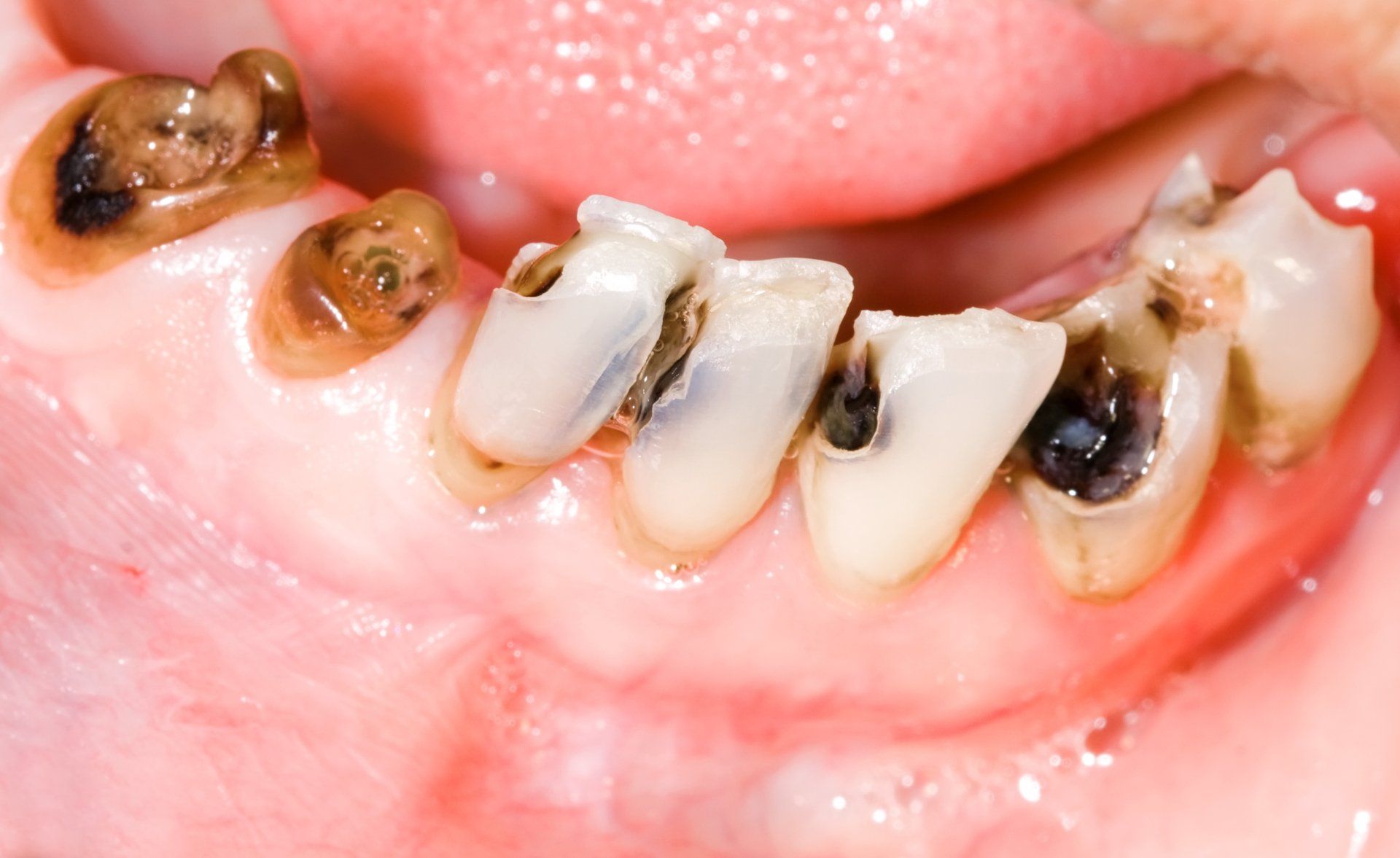Tooth Decay: Symptoms, Causes, Treatment
What are the symptoms of tooth decay?
Tooth decay, also known as dental caries or cavities, can cause various symptoms depending on the severity and location of the decay. Some common symptoms of tooth decay include:
- Toothache: Pain or discomfort in the affected tooth or teeth, which can range from mild to severe.
- Sensitivity: Increased sensitivity to hot, cold, sweet, or acidic foods and drinks.
- Visible Holes or Pits: Holes or pits may be visible on the surface of the affected tooth, indicating decay.
- Staining: Brown, black, or white stains on the surface of the tooth may indicate decay.
- Bad Breath: Persistent bad breath (halitosis) can be a sign of tooth decay or other dental issues.
- Pain When Chewing: Pain or discomfort when chewing or biting down, especially on the affected tooth.
- Swelling: Swelling or redness around the gums near the affected tooth, which may indicate an infection.
- Pus: Pus around the affected tooth may indicate an abscess, which is a serious complication of untreated tooth decay.
- Pain or Sensitivity to Pressure: Pain or sensitivity when biting down or applying pressure to the affected tooth.
It’s important to note that early-stage tooth decay may not cause any symptoms, which is why regular dental check-ups are essential for early detection and treatment. If you experience any of these symptoms, it’s important to see a dentist promptly for an evaluation and appropriate treatment.
What are the causes of tooth decay?
Tooth decay, also known as dental caries or cavities, is primarily caused by the interaction of bacteria, sugars, and acids in the mouth. The process of tooth decay typically involves the following steps:
- Formation of Dental Plaque: Dental plaque is a sticky film of bacteria that forms on the teeth. When you consume sugary or starchy foods, the bacteria in plaque feed on these carbohydrates and produce acids.
- Acid Attack: The acids produced by bacteria in plaque can attack the enamel, which is the outermost layer of the tooth. This acidic environment can demineralize the enamel, leading to the formation of tiny holes or cavities.
- Progression of Decay: If left untreated, tooth decay can progress deeper into the tooth, affecting the dentin (the layer beneath the enamel) and eventually reaching the pulp, which contains nerves and blood vessels. This can lead to pain, infection, and potential tooth loss.
Factors that can increase the risk of tooth decay include:
- Poor Oral Hygiene: Inadequate brushing and flossing can lead to the buildup of plaque and tartar, increasing the risk of tooth decay.
- High Sugar and Starch Intake: Consuming sugary and starchy foods and drinks can increase the production of acids by bacteria, contributing to tooth decay.
- Acidic Foods and Drinks: Acidic foods and drinks can erode enamel, making the teeth more susceptible to decay.
- Dry Mouth: Reduced saliva flow can increase the risk of tooth decay, as saliva helps neutralize acids and remineralize the enamel.
- Medical Conditions: Certain medical conditions, such as acid reflux and GERD, can increase the risk of tooth decay by exposing the teeth to stomach acids.
- Medications: Some medications, such as antihistamines and antidepressants, can reduce saliva flow, increasing the risk of tooth decay.
- Age: As you age, the enamel on your teeth may naturally wear down, increasing the risk of decay.
- Genetics: Some people may be more predisposed to tooth decay due to genetic factors that affect the strength and structure of their teeth.
Preventing tooth decay involves practicing good oral hygiene, reducing sugar intake, and regularly visiting the dentist for check-ups and cleanings.
What is the treatment for tooth decay?
The treatment for tooth decay depends on the severity of the decay and the extent of damage to the tooth. Common treatments for tooth decay include:
- Fillings: If the decay is limited to the enamel or dentin, the dentist may remove the decayed portion of the tooth and fill the cavity with a dental filling material, such as composite resin, amalgam, or gold.
- Crowns: If the decay is extensive and has weakened the tooth, a crown (cap) may be placed over the tooth to restore its shape, size, and function.
- Root Canal Therapy: If the decay has reached the pulp (the innermost part of the tooth containing nerves and blood vessels) and caused an infection, a root canal procedure may be necessary. During this procedure, the infected pulp is removed, and the root canal is cleaned and sealed.
- Extraction: If the tooth is severely decayed and cannot be saved, it may need to be extracted (removed). This is usually a last resort when other treatments are not possible.
- Fluoride Treatment: In some cases, fluoride treatment may be recommended to remineralize the enamel and strengthen the tooth.
- Preventive Measures: To prevent further decay, the dentist may recommend dental sealants (a thin, protective coating applied to the chewing surfaces of the back teeth) and fluoride treatments.
- Improving Oral Hygiene: Practicing good oral hygiene, including brushing twice a day, flossing daily, and using an antiseptic mouthwash, can help prevent tooth decay.
- Dietary Changes: Limiting sugary and acidic foods and drinks can help reduce the risk of tooth decay.
It’s important to see a dentist regularly for check-ups and cleanings to detect and treat tooth decay early. Early treatment can help prevent further damage to the tooth and avoid the need for more extensive treatments.




